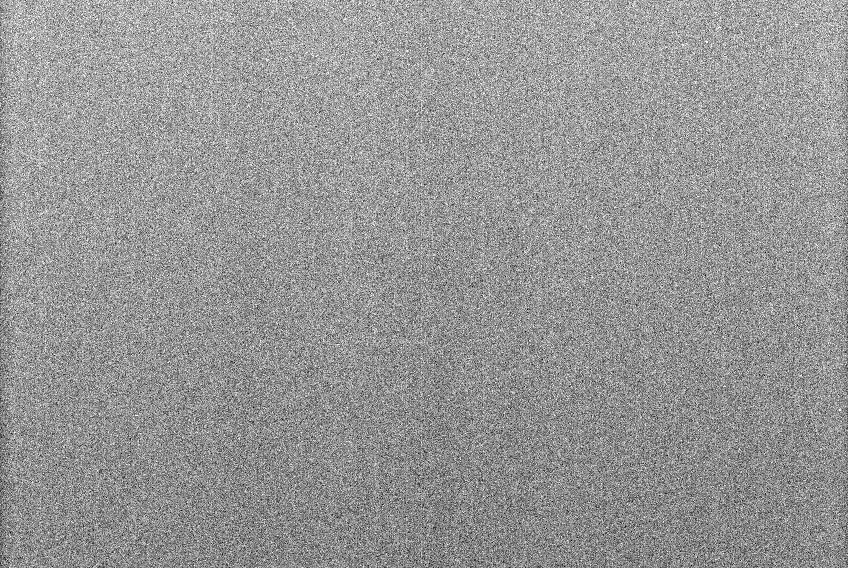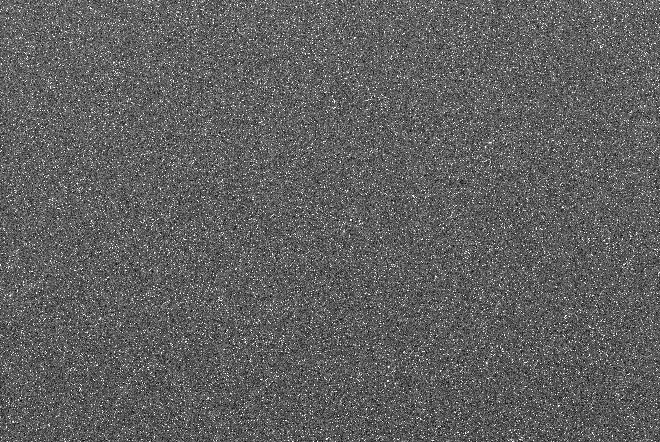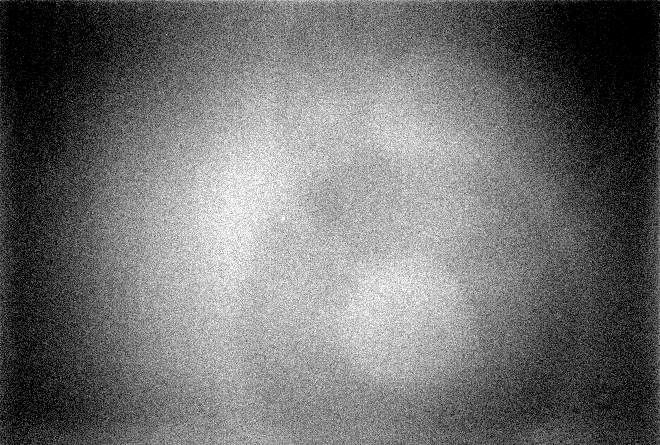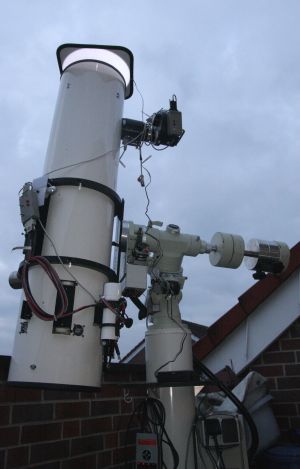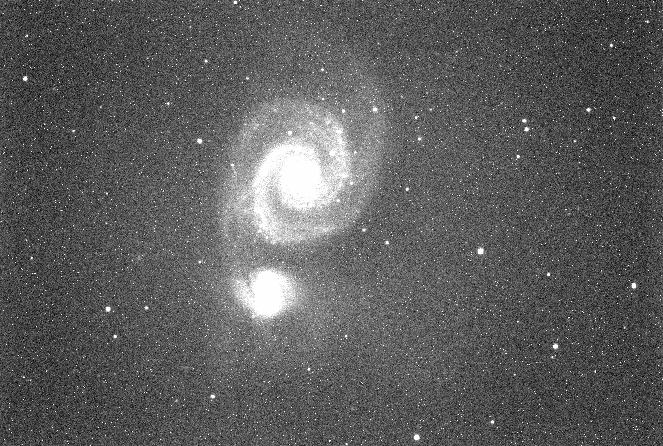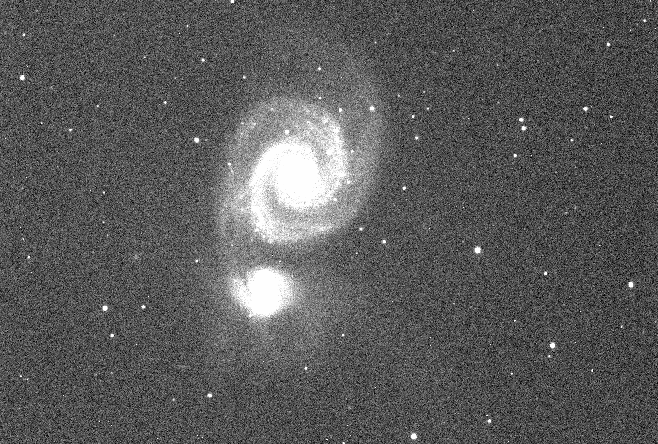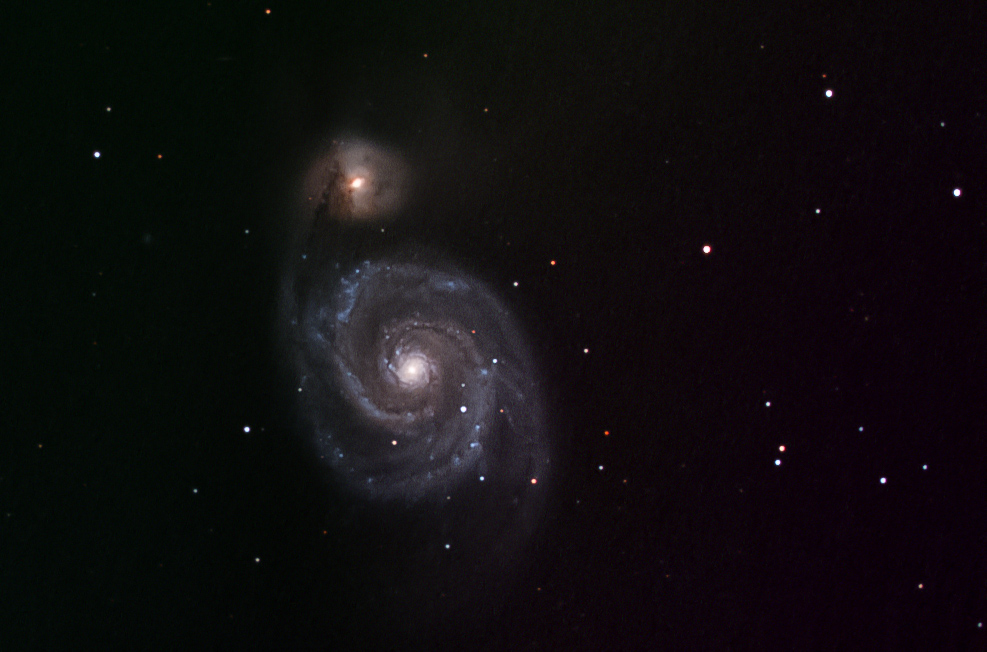In the previous lecture, we covered the basics of how CCDs work. Once we have taken our CCD image we'd like to use it for some scientific purpose. For example, we might wish to perform relative or absolute photometry on the stars in the image. However, before we can do that, we must perform some additional processing on the image. To understand why, we need to look at some details of CCD operation.
Bias Frames
Let's recall how a CCD measures the number of electrons \(N_e\) in each pixel. These electrons have a total charge \(Q = eN_e\). We measure this charge by dumping it onto a capacitor with capacitance \(C\) and measuring the voltage \(V = Q/C\). We can re-write the number of electrons in terms of this tiny, analog voltage as \[N_e = CV/e.\] In other words, the voltage is proportional to the number of electrons. Because we need to store the data in digital format, the analog voltage is converted to a digital number of counts \(N_c\), by an analog-to-digital converter (ADC). Since the value in counts is proportional to the voltage \(N_c \propto V\), it follows that the number of counts is proportional to the number of photo-electrons, i.e \(N_e = GN_c\), where \(G\) is the Gain, measured in e-/ADU. The number of bits used by the ADC to store the count values limits the number of different count values that can be represented. For a 16-bit ADC, we can represent count values from 0 to 65,535.
Now, imagine a relatively short exposure, taken from a dark astronomical site. Suppose that the gain, \(G=1\) e-/ADU and that in our short exposure we create, on average, two photo-electrons from the sky in each pixel. Because of readout noise, we will NOT have 2 counts in each pixel. Instead, the pixel values will follow a Gaussian distribution, with a mean of 2 counts, and a standard deviation given by the readout noise, which may be of the order of 3 counts. It should be obvious that this implies that many pixels should contain negative count values. However, our ADC cannot represent numbers less than 0! This means our data has been corrupted by the digitisation process. If we didn't fix this, it would cause all sorts of problems: in this case it would lead us to over-estimate the sky level.
The solution is to apply a bias voltage. This is a constant offset voltage applied to the capacitor before analog-to-digital conversion. The result is that, even if the pixel contains no photo-electrons, the ADC returns a value of a few hundred counts, nicely solving the issue of negative counts. However, it does mean that we must correct for the bias level when doing photometry! Each pixel in our image contains counts from stars, from the sky background and from the bias level. We must subtract the bias level before performing photometry.
How do we know what the bias level is? The easiest way to do this is to take a series of images with zero exposure time. Because there is no exposure time, these images contain no photo-electrons, and no thermally excited electrons. These images, known as bias frames, allow us to measure the bias level, and subtract it from our science data. A bias frame is shown in figure 73. Several bias frames are needed because the value of any pixel in a given bias frame will differ from the bias level due to readout noise. Averaging several frames together reduces the impact of readout noise and gives a more accurate estimate of the bias level. The master bias frame produced from this averaging can be subtracted from all science images to remove the bias level from each pixel.
